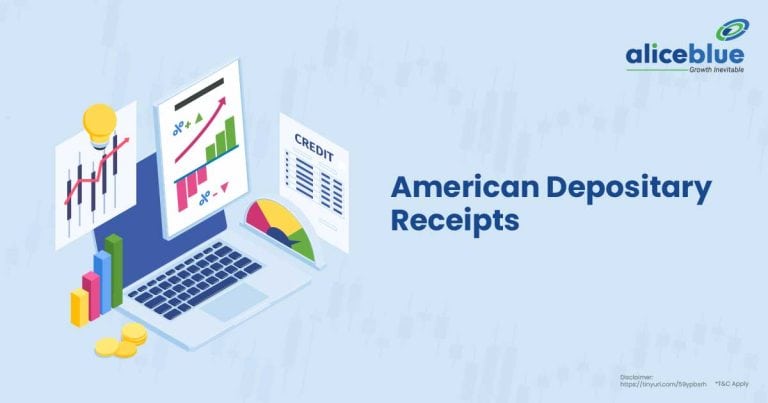The primary difference between current assets and liquid assets is that current assets are those that are expected to turn into cash within a year, while liquid assets are those that can be immediately converted to cash with little or no delay or loss in value.
What Are Current Assets?
Current assets are those that a business expects to turn into cash or use within a year. These assets play a key role in supporting everyday operations and include items like cash, accounts receivable, and inventory. They ensure that the company can manage short-term expenses.
Current assets provide a snapshot of a company’s liquidity and its ability to handle short-term financial responsibilities. They are listed on the balance sheet and typically consist of categories like cash, marketable securities, stock, and prepaid expenses. The quicker an asset is converted into cash, the more liquid it is. Effective management of current assets is crucial for smooth daily operations.
A company might have ₹5,00,000 in cash, ₹2,00,000 in accounts receivable, and ₹3,00,000 in inventory. These total ₹10,00,000 as current assets, which can be converted to cash or used within a year to cover short-term needs..

What Is A Liquid Asset?
A liquid asset is an asset that can be quickly converted into cash without losing significant value. These assets are essential for managing immediate financial needs and include cash, bank balances, and marketable securities. Liquid assets help companies maintain smooth financial operations.
Liquid assets are a crucial indicator of a company’s short-term financial health. They ensure that businesses can meet their immediate obligations without selling long-term investments or fixed assets. Some of the examples of liquid assets include cash on hand, money in savings accounts, and short-term investments like treasury bills. Efficient management of liquid assets ensures that companies have enough liquidity to manage urgent expenses.
A business might have ₹3,00,000 in cash, ₹2,00,000 in short-term government bonds, and ₹1,00,000 in marketable securities. These total ₹6,00,000 as liquid assets, all of which can be quickly accessed to meet immediate cash needs without losing value.
Current Assets Vs Liquid Assets
One primary difference between Current Assets and Liquid Assets is that current assets include all assets that can be converted into cash within a year, while liquid assets are those that can be turned into cash almost immediately without significant value loss or delay.
| Parameter | Current Assets | Liquid Assets |
| Time to Convert | Within one year | Immediately or very quickly |
| Examples | Cash, inventory, accounts receivable | Cash, savings, marketable securities |
| Liquidity | Varies; includes less liquid items like inventory | Highly liquid; easily converted to cash |
| Business Usage | Used to meet short-term financial obligations | Used to handle immediate financial needs |
| Includes Inventory | Yes | No |
| Risk of Value Loss | Some risk with certain assets | Little to no risk of value loss |
| Availability | Available in near future | Instantly available |
| Balance Sheet Placement | Listed as part of total current assets | Part of current assets but more liquid |
Types of Current Assets
Types of current assets include cash, accounts receivable, inventory, marketable securities, prepaid expenses, and short-term investments. These assets are vital for keeping the business financially healthy and managing day-to-day expenses and obligations. All the types of current assets are discussed below:
- Cash:
Cash is the most liquid asset, encompassing physical money and bank balances. It is used for daily transactions and to meet immediate business needs. A company’s ability to pay suppliers, employees, and other operational expenses depends heavily on its cash reserves. If a company has ₹2,00,000 in cash reserves, it can use this amount to pay bills, salaries, or purchase supplies. Having cash on hand ensures that the company can meet unexpected expenses promptly.
- Accounts Receivable:
Accounts receivable represents the money that customers owe to the business for goods or services sold on credit. These receivables are expected to be converted into cash within a short period, improving the company’s liquidity position. A business expecting ₹1,50,000 from clients for services already provided will record this amount as accounts receivable. This ensures that the company anticipates future cash inflows and can manage its finances accordingly.
- Inventory:
Inventory includes goods that a company holds for sale or raw materials that will be used in production. While inventory is not as liquid as cash, it is expected to be sold and turned into revenue within a year. A retail business with ₹5,00,000 worth of inventory expects to sell these goods within the year. Inventory turnover helps the company generate sales, but slow-moving inventory can tie up capital.
- Marketable Securities:
These are investments that can be quickly sold in the financial markets, such as stocks, bonds, or treasury bills. Marketable securities offer the flexibility to raise funds quickly, making them a key liquid asset for businesses. If a company holds ₹3,00,000 in stocks, it can sell these securities within days if needed to meet financial demands. This ensures liquidity without the need to liquidate long-term assets.
- Prepaid Expenses:
Prepaid expenses are payments made in advance for services or goods that the company will receive later, such as rent or insurance. These expenses are recorded as assets because they provide future economic benefits. A company might prepay ₹50,000 for six months of insurance coverage. This prepaid amount is recorded as a current asset and expensed monthly as the benefit is received.
- Short-Term Investments:
Short-term investments include assets like certificates of deposit or short-term bonds that can be converted into cash within a year. They help the company earn returns on idle cash without sacrificing liquidity. A company might invest ₹2,00,000 in short-term bonds, which will mature in six months. These investments allow the company to earn interest while ensuring that funds are available when needed.
Importance of Liquid Assets
The major importance of liquid assets is that they provide businesses with immediate access to cash for handling urgent financial needs. Liquid assets help companies maintain financial stability by allowing them to meet short-term obligations without having to sell long-term investments or raise additional capital.
- Handling Unexpected Expenses: Liquid assets are essential for covering unforeseen expenses, such as sudden repairs, legal fees, or emergency purchases. Having liquid assets ensures that the company can respond quickly to unexpected financial demands without disrupting operations or seeking external funding.
- Meeting Short-Term Liabilities: Companies need liquid assets to pay short-term debts like accounts payable, salaries, and taxes. Without sufficient liquidity, a business may struggle to meet its obligations, leading to potential penalties, damaged credit ratings, or strained relationships with creditors and suppliers.
- Ensuring Operational Continuity: Liquid assets allow businesses to continue day-to-day operations smoothly, even during cash flow shortages. By maintaining liquidity, a company can avoid delays in procurement, production, or service delivery, ensuring that its operations run efficiently.
- Attracting Investors and Lenders: A company with strong liquid assets appears financially healthy and stable, making it more attractive to investors and lenders. Having liquid assets on hand signals a lower risk profile, improving the company’s ability to secure loans or attract investment for future growth.
- Taking Advantage of Opportunities: Liquid assets enable businesses to quickly seize new investment or expansion opportunities. Whether it’s purchasing discounted assets, acquiring another company, or entering new markets, liquidity ensures that the company can act promptly when favorable opportunities arise.
To understand the topic and get more information, please read the related stock market articles below.
| FPI Meaning |
| Mark to Market meaning |
| What Is A Corporate Bond |
| High Beta Stocks Meaning |
| Domestic institutional investors |
| ASM full form |
| Features Of Capital Market |
| IPO Benefits |
| Proposed Dividend |
Difference Between Liquid Assets And Current Assets – Quick Summary
- The key distinction between current and liquid assets is that current assets can be converted into cash within a year, while liquid assets can be quickly turned into cash without a significant loss in value.
- Current assets are essential for covering short-term liabilities, including items like cash, accounts receivable, and inventory.
- Liquid assets are those that can be easily converted into cash, such as cash on hand and marketable securities, to meet urgent financial needs.
- One of the major differences between current assets and liquid assets is that current assets take time to convert into cash, while liquid assets are immediately available.
- Cash, accounts receivable, inventory, marketable securities, prepaid expenses, and short-term investments are types of current assets vital for day-to-day business operations.
- The primary importance of liquid assets is that they are crucial for covering unexpected expenses and meeting short-term liabilities.
- Invest in mutual funds for free with Alice Blue.

Current Assets Vs Liquid Assets – FAQs
Examples of liquid assets include cash, bank balances, marketable securities (such as stocks and bonds), and short-term government bonds. These assets can be quickly converted into cash without significant loss in value.
Current assets are calculated by summing all assets expected to be converted into cash within a year. This includes cash, accounts receivable, inventory, marketable securities, prepaid expenses, and any short-term investments.
Yes, liquid assets are a subset of current assets. While all liquid assets are current assets, not all current assets are liquid. Liquid assets can be quickly converted into cash, while other current assets, like inventory, take more time.
Gold is considered a relatively liquid asset, as it can be quickly sold for cash. However, it is less liquid than cash or marketable securities, as converting gold into cash may take more time and involve transaction costs.
Fixed deposits (FDs) are typically not considered highly liquid assets, as they have a fixed maturity period. Early withdrawal may be possible, but it often incurs penalties, making FDs less liquid than cash or marketable securities.
Yes, cash is a current asset. It is the most liquid form of asset, used for day-to-day transactions, paying expenses, and covering short-term liabilities. It plays a crucial role in maintaining business liquidity.
We hope that you are clear about the topic. But there is more to learn and explore when it comes to the stock market, commodity and hence we bring you the important topics and areas that you should know:









